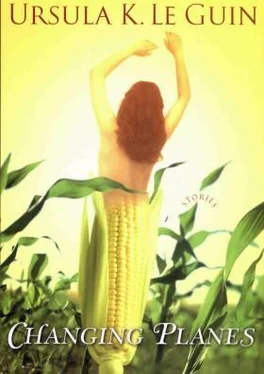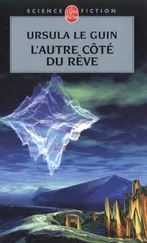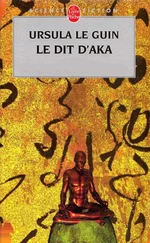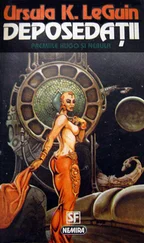The Sosa, the unadulterated Sosa who worshiped Af in the ancestral fashion and who mostly lived on farms not in the cities, were instructed by their priests that their God wished them to bear sons in His honor; so they had large families. Many priests had four or five wives and twenty or thirty children. Devout Sosa women prayed to Father Af for a twelfth, a fifteenth baby. In contrast, an Astasa woman bore a child only when she had been told, in trance, by her own body fetish, that it was a good time to conceive; and so she seldom had more than two or three children. Thus the Sosa came to outnumber the Astasa.
About five hundred years ago, the unorganised cities, towns, and farming communities of Obtry, underpressure from the aggressive Vens to the north and under the influence of the Ydaspian Enlightenment emanating from the Mahigul Empire in the east, drew together and formed first an alliance, then a nation-state. Nations were in fashion at the time. The Nation of Obtry was established as a democracy, with a president, a cabinet, and a parliament elected by universal adult suffrage. The parliament proportionately represented the regions (rural and urban) and the ethnoreligious populations (Sosa, Astasa, AfFastasa, Sosasta, and Astasosa).
The fourth President of Obtry was a Sosa named Diud, elected by a fairly large majority.
Although his campaign had become increasingly outspoken against “godless” and “foreign” elements of Obtrian society, many Astasa voted for him. They wanted a strong leader, they said. They wanted a man who would stand up against the Vens and restore law and order to the cities, which were suffering from overpopulation and uncontrolled mercantilism.
Within half a year Diud, having put personal favorites in the key positions in the cabinet and parliament and consolidated his control of the armed forces, began his campaign in earnest. He instituted a universal census which required all citizens to state their religious allegiance (Sosa, Sosasta, Astasosa, or Heathen) and their bloodline (Sosa or non-Sosa).
Diud then moved the Civic Guard of Dobaba, a predominately Sosa city in an almost purely Sosa agricultural area, to the city of Asu, a major river port, where the population had lived peacefully in Sosa, Astasa, Sosasta, and Astasosa neighborhoods for centuries. There the guards began to force all Astasa, or Heathen non-Sosa, newly reidentified as godless persons, to leave their homes, taking with them only what they could seize in the terror of sudden displacement.
The godless persons were shipped by train to the northwestern border. There they were held in various fenced camps or pens for weeks or months, before being taken to the Venian border. They were dumped from trucks or train cars and ordered to cross the border. At their backs were soldiers with guns. They obeyed. But there were also soldiers facing them: Ven border guards. The first time this happened, the Ven soldiers, thinking they were facing an Obtrian invasion, shot hundreds of people before they realised that most of the invaders were children or babies or old or pregnant, that none of them were armed, that all of them were cowering, crawling, trying to run away, crying for mercy. Some of the Ven soldiers continued shooting anyway, on the principle that Obtrians were the enemy.
President Diud continued his campaign of rounding up all the godless persons, city by city. Most were taken to remote regions and kept herded in fenced areas called instructional centers, where they were supposed to be instructed in the worship of Af. Little shelter and less food was provided in the instructional centers. Most of the inmates died within a year. Many Astasa fled before the roundups, heading for the border and risking the random mercy of the Vens. By the end of his first term of office, President Diud had cleansed his nation of half a million Astasa.
He ran for reelection on the strength of his record. No Astasa candidate dared run. Diud was narrowly defeated by the new favorite of the rural, religious Sosa voters, Riusuk. Riusuk’s campaign slogan was “Obtry for God,” and his particular target was the Sosasta communities in the southern cities and towns, whose dancing worship his followers held to be particularly evil and sacrilegious.
A good many soldiers in the southern province, however, were Sosasta, and in Riusuk’s first year of office they mutinied. They were joined by guerrilla and partisan Astasa groups hiding out in the forests and inner cities. Unrest and violence spread and factions multiplied. President Riusuk was kidnapped from his lakeside summer house. After a week his mutilated body was found beside a highway. Astasa fetishes had been stuffed into his mouth, ears, and nostrils.
During the turmoil that ensued, an Astasosa general, Hodus, naming himself acting president, took control of a large splinter group of the army and instituted a Final Cleansing of Godless Atheist Heathens, the term which now defined Astasa, Sosasta, and Affastasa. His soldiers killed anybody who was or was thought to be or was said to be non-Sosa, shooting them wherever they were found and leaving the bodies to rot.
Affastasa from the northwestern province took arms under an able leader, Shamato, who had been a schoolteacher; her partisans, fiercely loyal, held four northern cities and the mountain regions against Hodus’s forces for seven years. Shamato was killed on a raid into Astasosa territory.
Hodus closed the universities as soon as he took power. He installed Affan priests as teachers in the schools, but later in the civil war all schools shut down, as they were favorite targets for sharpshooters and bombers. There were no safe trade routes, the borders were closed, commerce ceased, famine followed, and epidemics followed famine. Sosa and non-Sosa continued killing one another.
The Vens invaded the northern province in the sixth year of the civil war. They met almost no resistance, as all able-bodied men and women were dead or fighting their neighbors. The Ven army swept through Obtry cleaning out pockets of resistance. The region was annexed to the Nation of Ven, and remained a tributary province for the next several centuries.
The Vens, contemptuous of all Obtrian religions, enforced public worship of their deity, the Great Mother of the Teats. The Sosa, Astasosa, and Sosasta learned to prostrate themselves before huge mammary effigies, and the few remaining Astasa and Affastasa learned to dance in a circle about small tit fetishes.
Only the Tyob, far up in the mountains, remained much as they had always been, poor herdsfolk, with no religion worth fighting over. The anonymous author of the great mystical poem The Ascent, a work which has made the province of Obtry famous on more than one plane, was a Tyob.
TWO TRIBES OF THE great Yeye Forest were traditional enemies. As a boy of the Hoa or the Farim grew up, he could scarcely wait for the honor of being chosen to go on a raid—the seal and recognition of his manhood.
Most raids were met by an opposing war party from the other tribe, and the battles were fought on various traditional battlegrounds, clearings in the forested hills and river valleys where the Hoa and Farim lived. After hard fighting, when six or seven men had been wounded or killed, the war chiefs on both sides would simultaneously declare a victory. The warriors of each tribe would run home, carrying their dead and wounded, to hold a victory dance. The dead warriors were propped up to watch the dance before they were buried.
Occasionally, by some mistake in communications, no war party came forth to meet the raiders, who were then obliged to run on into the enemy’s village and kill men and carry off women and children for slaves. This was unpleasant work and often resulted in the death of women, children, and old people of the village as well as the loss of many of the raiding party. It was considered much more satisfactory all around if the raidees knew that the raiders were coming, so that the fighting and killing could be done properly on a battlefield and did not get out of hand.
Читать дальше









